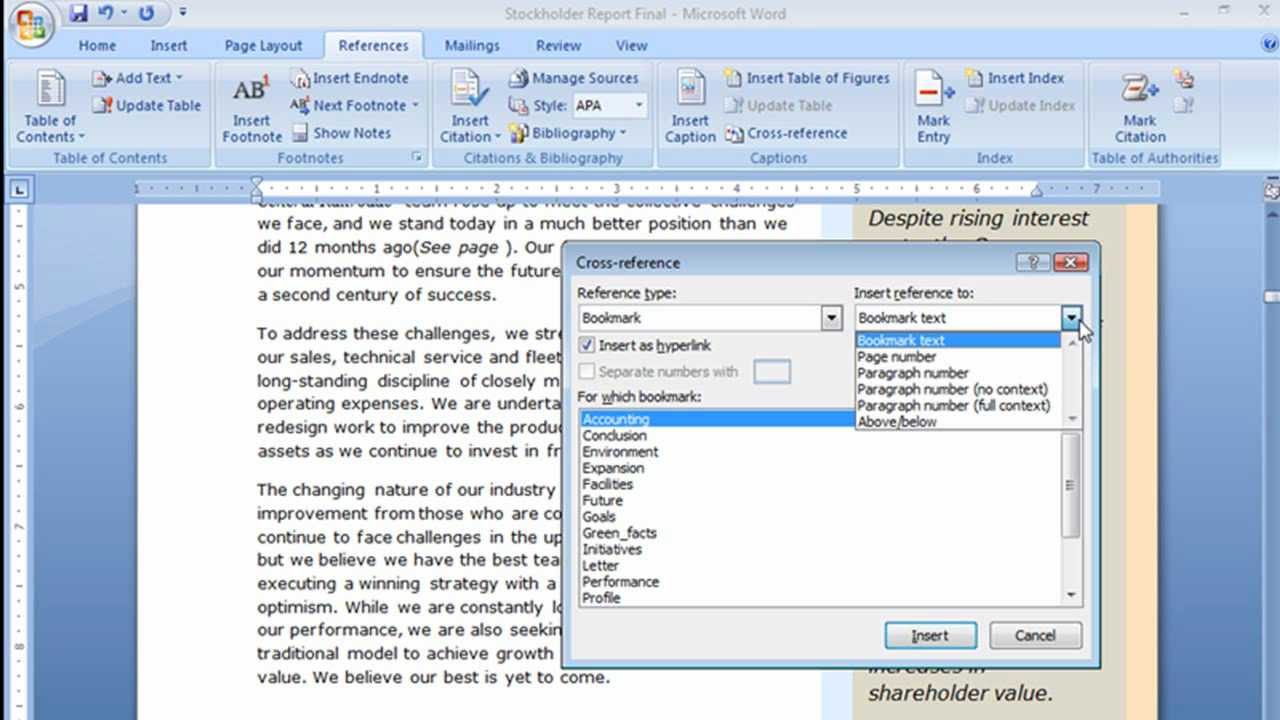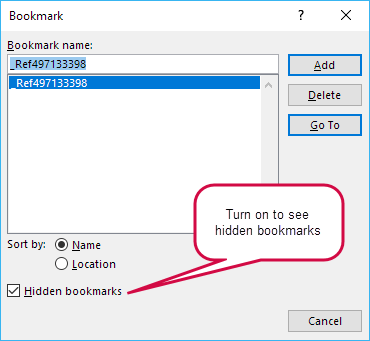Create the item you're cross-referencing first
You can't cross-reference something that doesn't exist, so be sure to create the chart, heading, page number, etc., before you try to link to it. When you insert the cross-reference, you'll see a dialog box that lists everything that's available to link to. Here's an example.
Insert the cross-reference
- In the document, type the text that begins the cross-reference. For example, 'See Figure 2 for an explanation of the upward trend.'
- On the Insert tab, click Cross-reference.
- In the Reference type box, click the drop-down list to pick what you want to link to. The list of what's available depends on the type of item (heading, page number, etc.) you're linking to.
- In the Insert reference to box, click the information you want inserted in the document. Choices depend on what you chose in step 3.
- In the For which box, click the specific item you want to refer to, such as 'Insert the cross-reference.'
- To allow users to jump to the referenced item, select the Insert as hyperlink check box.
- If the Include above/below check box is available, check it to include specify the relative position of the referenced item.
- Click Insert.
Cross-references are inserted as fields
Cross-references are inserted into your document as fields. A field is a set of information that instructs Word to insert text, graphics, page numbers, and other material into a document automatically. For example, the DATE field inserts the current date. The advantage of using fields is that the content being inserted--date, page number, graphics, etc.--gets updated for you whenever there's a change. For example, if you're writing a document over a period of days, the date will change each day when you open and save the document. Similarly, if you update a graphic that's stored elsewhere but referenced in the field, the update will get picked up automatically without you having to re-insert the graphic.


